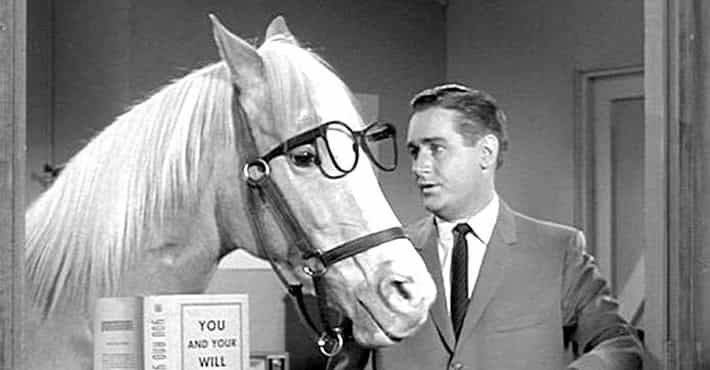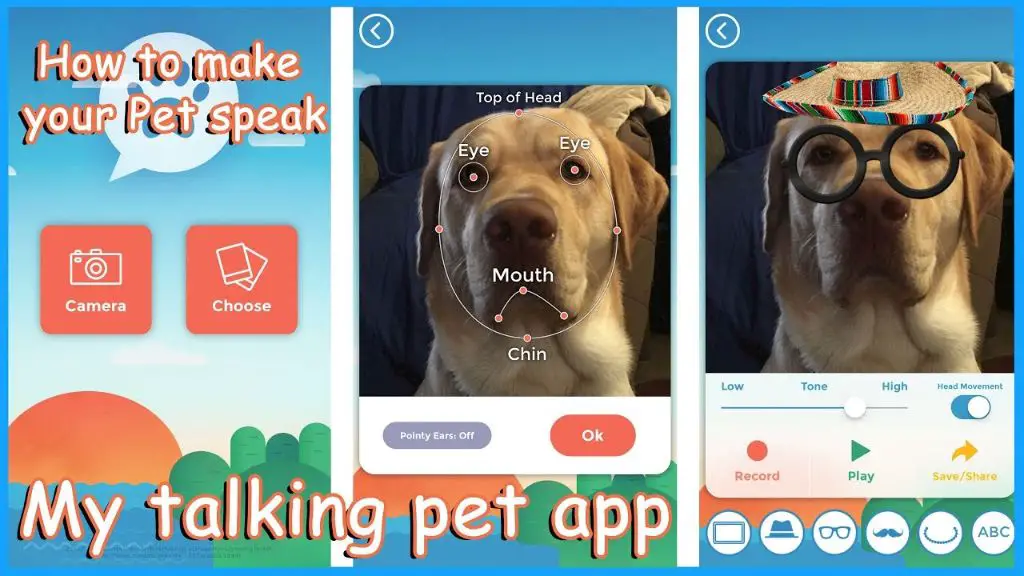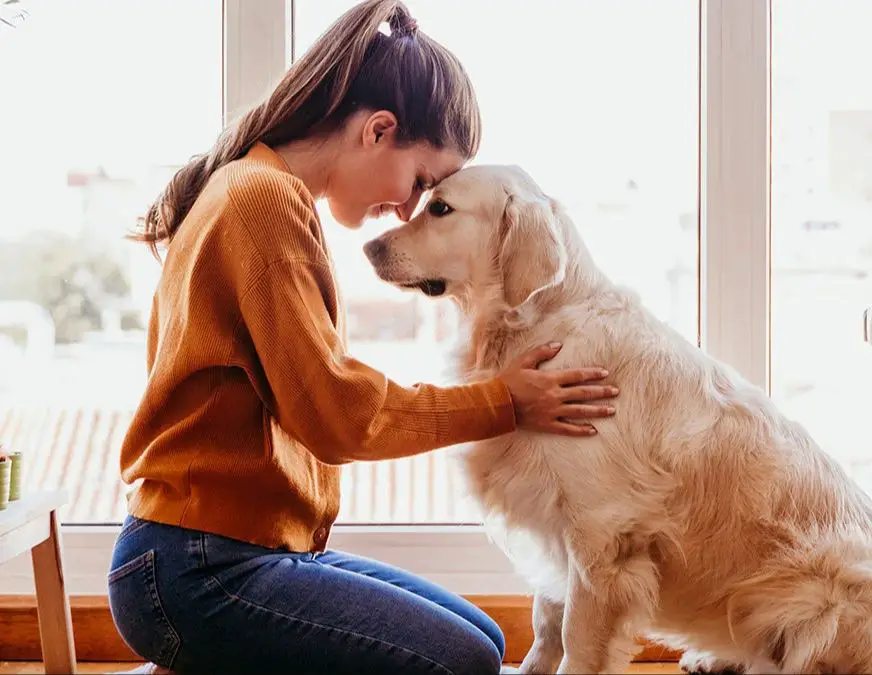Introduction
In recent years, viral videos have emerged online showing dogs appearing to talk. Using voice dubbing and editing tricks, pet owners create funny videos where their dogs seem to speak in human voices. These “talking dog” videos have become hugely popular on sites like YouTube, with some getting millions of views. They often show dogs seeming to comment on their daily lives or have witty conversations with their owners.
The technology behind talking dogs has advanced rapidly. While earlier videos relied on rudimentary editing, new smartphone apps use AIs to add voices to videos in a more seamless and realistic way. These apps typically allow you to record a video of your dog, then have the app animate its mouth and add a synthetically generated human voice. Popular options include PlayWithFido, Talking Pets, and BarkTalk.
Talking dog videos appeal to our love of pets and the humor inherent in dogs appearing to speak like humans. As the apps improve, talking dogs are likely to grow even more popular online.
History of Talking Dogs in Media
Talking dogs have been a staple in media and pop culture for decades. One of the earliest and most famous examples is Mr. Ed, a talking palomino horse from the classic sitcom that aired from 1961-1966. Though Mr. Ed was technically a horse, the show featured innovative methods to make it appear as if he could talk and interact with his human co-stars.

Another seminal talking dog is Scooby-Doo from the animated Scooby-Doo, Where Are You! series that first aired in 1969. Scooby-Doo could speak English words and short phrases, allowing him to engage in humorous back-and-forth banter with Shaggy and the rest of the mystery-solving gang.
In more recent decades, CGI and visual effects have enabled more realistic talking dogs in movies like Look Who’s Talking Now (1989), Babe (1995), and numerous Disney films. The aforementioned BuzzFeed article provides an in-depth look at many other examples of talking dogs throughout cinematic history.
Talking dogs hold an enduring appeal for audiences young and old. They add an imaginative, whimsical element to any story while allowing dogs to transcend their ordinary restrictions as pets. Audiences love imagining how their own dogs might sound if suddenly gifted with human speech.
Why Do People Want Their Dogs to ‘Talk’?
One of the main reasons people want their dogs to ‘talk’ is for entertainment and humor. Seeing a dog move its mouth and seem like it’s having a conversation is amusing and can go viral online. People find talking dogs cute because they almost seem human-like. As one article points out, “Almost all American pet owners see their pets as family members, and giving a pet a voice is a way of making it seem like an active participant in the household.” (Source)
Making a dog appear to talk allows owners to pretend to have conversations with their pet. People like to imagine what their dog would say if it could speak. Giving dogs a human voice is a way to showcase their personality and reinforce the unique bond between owner and pet. As another article states, “Many people use specific voices for individual pets as a way of reaffirming each animal’s unique personality.” (Source)
Overall, people find dogs ‘talking’ entertaining and a way to strengthen their relationship with their pet. It’s an imaginative experience that brings joy and humor.
How the Talking Dog Apps Work

Talking dog apps leverage audio editing, AI, and machine learning technology to generate realistic sounding speech and sync it to video of dogs. Here’s an overview of how they work:
The apps allow users to upload a photo or short video clip of their dog. Through audio editing, the app developers have compiled various dog sound effects like barking and panting. They use audio manipulation technology to stretch and morph these sounds into pseudo-words and phrases. The resulting ‘speech’ audio is then overlaid on top of the dog video, synced to mouth and head movements to make it appear like the dog is talking.
More advanced talking dog apps like My Talking Pet1 utilize AI and neural networks to generate a wider range of vocalizations from the input dog sounds. The AI can analyze mouth shapes and movements in the dog footage to better match appropriate sounds and create a more natural talking effect.
The synced dog video with the computer generated speech from the apps can then be saved and shared by users on social media or messaging platforms for fun viral videos with family and friends. While not perfect, the audio generation technology in these apps is advanced enough to make relatively believable talking dog videos.
1 https://play.google.com/store/apps/details?id=info.wobamedia.mytalkingpet.free&hl=en_US&gl=US
Popular Talking Dog Apps
There are a few popular apps that allow users to make their dogs appear to talk in videos and photos. Some of the top options include:
My Talking Pet – This free app for iOS and Android lets you upload a photo of your pet and sync animated 3D mouth movements to audio recordings. You can make your pet appear to talk, sing, and mime along to music. The app provides voice morphing features to make your pet’s voice sound silly or realistic.
Talking Tom – Part of a popular franchise of ‘talking’ animal apps, Talking Tom allows you to record audio and watch as Tom the cartoon cat repeats it in a synced video. The app provides voice effects and you can add accessories or items for Tom to interact with.
PetMoji – This app lets you create customized emoji stickers and memes of your pet. You can add speech bubbles to make it look like your pet is messaging you or commenting on photos. The app has a database of cute animations and expressions to choose from.
Other options like Talking Ginger, Talking Santa, and Talking Baby Hippo allow you to apply the ‘talking animal’ effect to different characters beyond just dogs. Most apps provide voice modulation features, accessories, stickers, and easy sharing options to popular social platforms.
Creating Your Own Talking Dog Videos
With the rise in popularity of talking dog videos, many pet owners are looking to create their own. The process is relatively simple with just a few key steps:
First, you’ll need to record your dog. Try capturing different barks, whines, growls, and other vocalizations. You can prompt your dog with toys or treats. Record in a quiet environment to limit background noise. Frame your dog in the center and record horizontal video for easier editing later.
Next, you’ll need to record a voiceover as the “human” side of the conversation. Write out a script ahead of time to map out the flow. Record your lines in order, leaving pauses where the dog’s responses will go. Speak clearly and expressively.
When editing, import the dog and human recordings. Insert the dog’s barks and reactions at the appropriate times to respond to the human voiceover. Cut and splice the footage to create a natural conversation flow. Add text if needed to clarify the dog’s lines.
Balance the audio levels so the voices are clear. Add an opening title and some light background music if desired. Avoid over-editing with excessive effects or transitions. The goal is to make it look like real talking between pet and owner.
With practice and creativity, you can produce fun talking dog videos to share with friends or post online. Just be sure to get consent if posting videos featuring other people. With the right editing tricks, you can have entertaining conversations with your furry friend.
Ethical Considerations
While talking dog apps and videos can be entertaining, there are some ethical concerns around whether they exploit dogs. Some critics argue that dogs do not actually understand the meaning behind the words and are simply learning to press buttons for a reward. They say it is anthropomorphizing, or giving human traits to animals, to interpret a dog’s button pressing as real communication.
For example, a 2021 article in The Conversation notes that while these videos seem miraculous to some owners, they could actually be efficient marketing tools that take advantage of people’s love for dogs. The article argues we should be cautious about making assumptions about dogs’ cognition and capacity for language.
Others counter that even if dogs don’t have human-level comprehension, the buttons still provide enrichment and bonding for pets and owners. A 2023 Washington Post article cites new research finding the buttons help dogs communicate basic needs to their owners. However, critics say more peer-reviewed studies are needed to truly understand what dogs grasp.
Overall, the debate centers on whether these apps exploit dogs by making unsupported claims about their language abilities. While entertaining, its important for consumers to maintain perspective on what dogs may actually comprehend. More research on canine cognition could help settle the ethical debate.
Viral Examples and Case Studies
Some of the most popular and widely shared talking dog videos on YouTube and social media include:
-
The “Apparently” Kid – A video of a young boy chatting with his dog went viral in 2011, racking up over 140 million views. The boy responds to each of the dog’s barks with “Apparently!” in a funny voice.
-
“Ultimate Dog Tease” – This 2011 video by Andrew Grantham shows his dog getting playfully teased with treats and phrases like “What are you doing?” It garnered over 140 million views.
-
“Charlie Bit My Finger” – Two young British brothers, Harry and Charlie, became a viral sensation when a 2007 video showed baby Charlie biting his brother’s finger and speaking in a funny voice. It has over 880 million views.
-
“Talking Dog Drives Through Fast Food” – In this 2010 video, a dog appears to be speaking as he goes through a drive-thru at Wendy’s, orders food, and interacts with the cashier. It has 75 million views.

These homemade videos of pets appearing to talk went viral because they were funny, cute moments that viewers loved sharing across social networks. The most popular talking dog videos earn millions or even billions of views by striking that perfect balance of humor, charm, and personality.
(Source: https://www.youtube.com/watch?v=zqMEJO2nPpQ)
The Future of Talking Dog Apps
The future looks bright for apps that give dogs a human voice. As artificial intelligence and natural language processing advance, developers are working on more sophisticated algorithms to translate a dog’s barks, growls, and body language into full sentences. Companies like XRAI Glass and Zoolingua are pushing the boundaries of animal-to-human communication using augmented reality glasses and AI. Their goal is to achieve two-way conversation between pets and owners.
Some experts predict that within 5-10 years, talking dog apps will be able to generate fluent dialog in the pet’s own unique voice and personality. Machine learning techniques will continue to improve translation accuracy as more data is collected. Apps may also expand beyond dogs to include other pets like cats, birds, and horses.
However, challenges remain around faithfully capturing an animal’s true intentions and emotions. There are also ethical concerns about projecting human attributes onto pets. Regulation may be needed to prevent exploitation or anthropomorphism. Despite the limitations, talking dog apps offer great potential to deepen the bond between humans and their furry companions.
Conclusion
While adding silly voiceovers and filters to videos of your dog may seem like harmless fun, it’s worth considering if these talking dog apps provide any real value or meaning. On one hand, they may bring some laughs and enjoyment by anthropomorphizing our canine companions. However, focusing too much on giving dogs “human” voices may also distract from appreciating them for the amazing animals they already are. At the end of the day, quality time and real interaction with our pets matter far more than any app.
If you do choose to try one of these apps, do so judiciously and avoid overusing it. Consider your motivations and whether the novelty might wear off quickly. And as always, focus on respecting your dog’s dignity, comfort and wellbeing first before chasing social media fame. While funny talking dog videos may go viral, they generally provide little lasting significance. The relationships we build with our pets, on the other hand, can bring joy and meaning for years to come.
